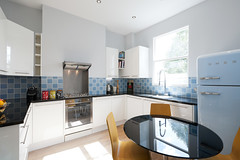 The main reason people decide to relocate and buy a larger house is because they want to accommodate their growing family. They either want to start a family or have their senior citizen parents move in to help with caring for their kids or with other domestic needs as they work longer hours.
The main reason people decide to relocate and buy a larger house is because they want to accommodate their growing family. They either want to start a family or have their senior citizen parents move in to help with caring for their kids or with other domestic needs as they work longer hours.
Another reason for moving to a bigger house is starting a self-employed business from home, which requires more space. When it comes to moving and upsizing the family home, things to consider include the costs of upgrading and arranging a new?home loan.
Costs of Upsizing
Besides the higher mortgage expenses, you will notice a lot of costs involved when upgrading to a larger house. But if your finances are stable and you understand your increased obligations, your decision to upsize will be all worth it.
Owning a bigger home will likely involve paying larger utility bills, council rates, more maintenance costs and new furniture and fittings to fill the additional space.
The process of purchasing your home will also most likely increase with your property price. This includes the high cost of stamp duty, which can cost up to $40,000 that is taken out of the profit you make from the sale of your old home.
When it comes to taking on a bigger mortgage, you will need to commit to higher monthly repayments. Arranging a larger mortgage will be the same process as a regular loan; however, your financial situation and credit score will need to be reassessed to determine your borrowing capacity with the lender. This is necessary if you want to borrow a high loan-to-value ratio (LVR). Ultimately, your borrowing history will determine your success as an upgrader.
Your Mortgage
There are a few?home loan?options available when upsizing to a bigger home. One of these involves simply selling your existing house, paying out your existing loan, then buying your new house and getting a new loan. The profit from your sale will be part of the transaction for the purchase of your new house, which your lender will arrange. You will be able to top up the remaining borrowing amount and begin to make new repayments, one month after the settlement.
With this home loan option, you can alternatively decide to pay out your existing loan and refinance to a new lender. The sale proceeds will pay out your old mortgage at the settlement of your existing home and anything left over will go towards reducing the amount you need to borrow for your new house.
Portable Home Loans
A portable home loan allows you to keep your existing mortgage when you move. This loan option will save you money, as you will not need to pay mortgage set-up costs because you would have already paid them before. And you won?t have to pay out your existing loan.
Bridging Home Loans
This home loan is suitable if you decide to buy your new house first before selling it. This is because you do not have the money yet from the sale of your existing home to put towards your new upgraded house. A bridging loan will cover you as you buy your new home while waiting for your current house to sell.
Just like regular home loans, you can get your choice of a fixed or variable interest rate. However, you may have shorter terms of 6 to 12 months and repayments could be more expensive. There will also be no repayments on the loan for the new house until your old house is sold.
Comments
Source: http://www.urbancartography.com/upsizing-family-home/
secret service prostitute rich ross april 20 jennifer love hewitt secret service prostitution 4 20 george zimmerman
No comments:
Post a Comment
Note: Only a member of this blog may post a comment.